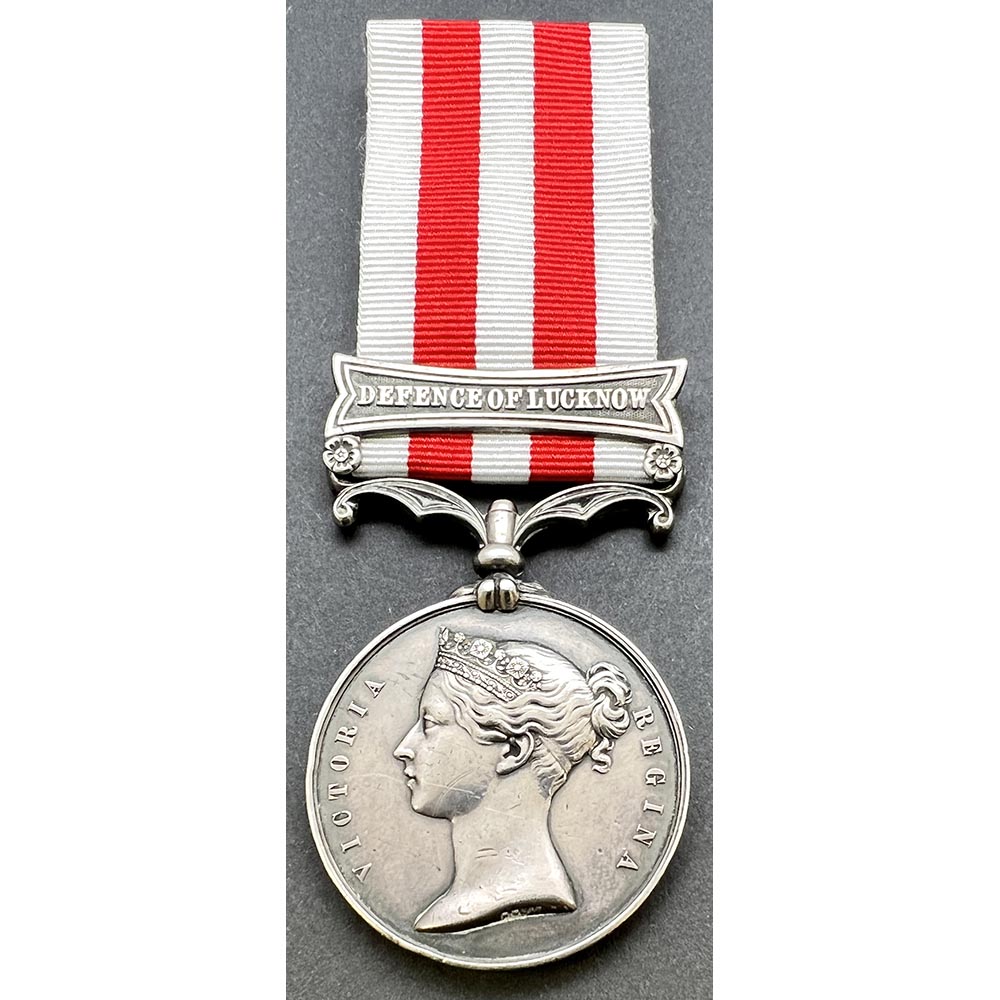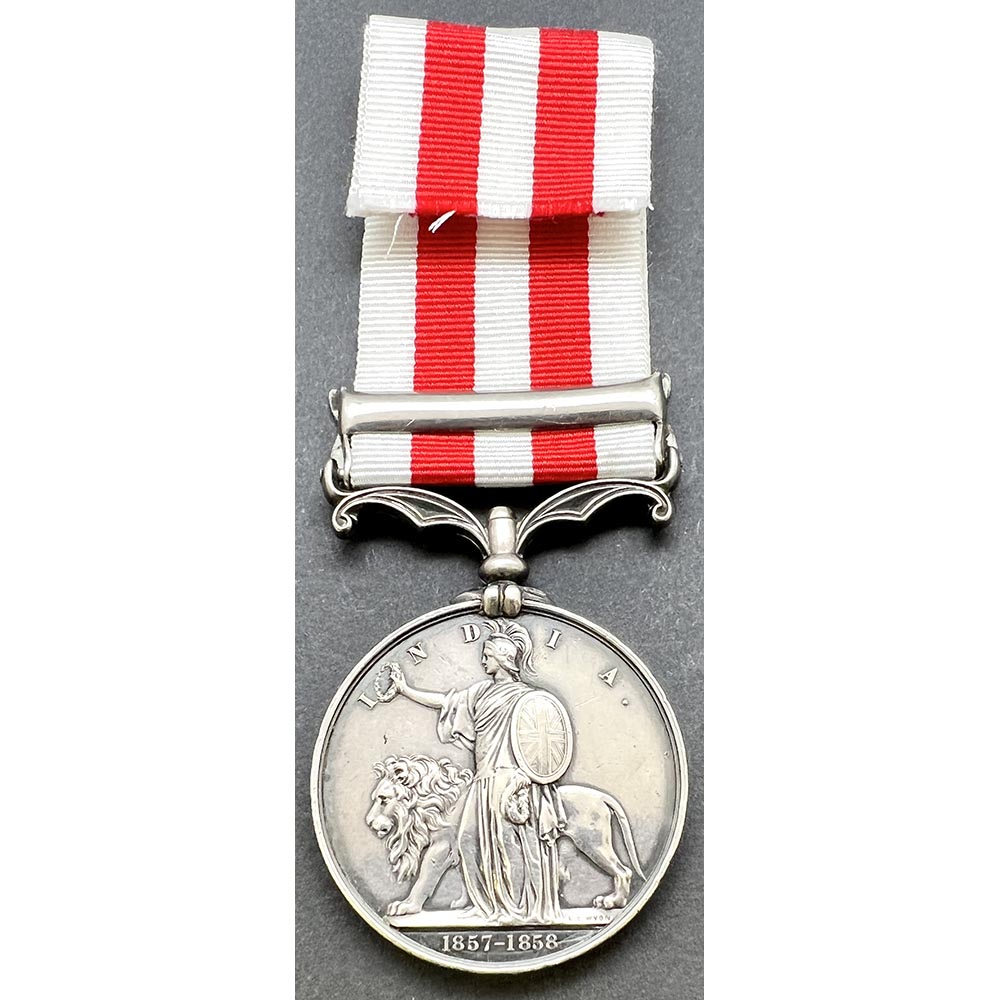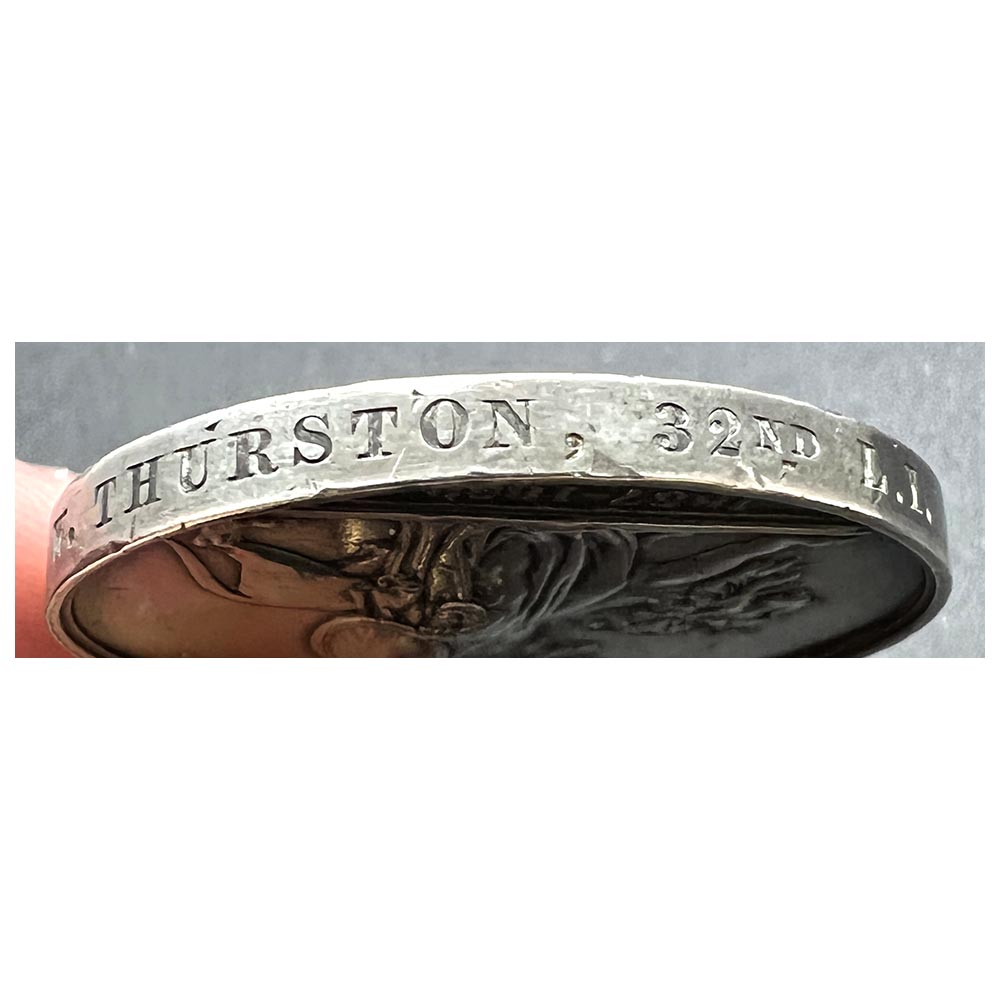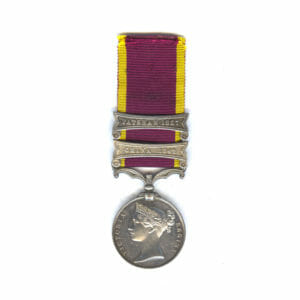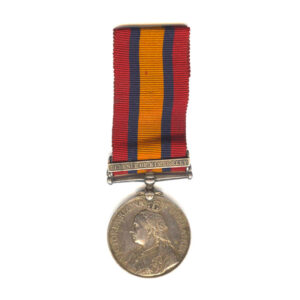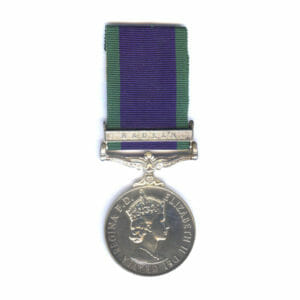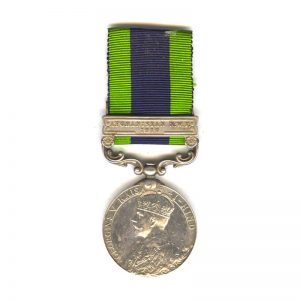Description
Indian Mutiny Medal, bar Defence of Lucknow, Corporal William Thurston, 32nd (Cornwall) Light Infantry, an Original Defender who was wounded in action during the siege. Born in Hereford.
Officially impressed: “W. Thurston, 32nd L.I.”
Ex Spink, 2020, Hammer £1800+24%
Brigadier Inglis’ despatch following the siege: “I have the pleasure of bringing the splendid behaviour of the soldiers of the 32nd Foot, to the notice of the Government of India. The losses sustained by the 32nd show that they know how to die in the cause of their countrymen. Their conduct under the fire, the exposure, and the privations which they had to undergo, has been throughout most admirable and praiseworthy.”
Inglis goes on to add that if you add up the Percentage of Officers present who were either Killed or Wounded, it would make 45.6%, however if you applied this same comparison to those from the 32nd, that percentage reached 83.3%
William Thurston, a Hereford man, was amongst the soldiers of the 32nd Light Infantry who defended the British Residency within the city of Lucknow from the surrounding rebel Sepoys.
He was severely wounded in the Siege but managed to carry on until 1861, earning an honourable discharge, with an extra 1 year added to his pension as a Hero of Lucknow.
Settling in London, he lost his wife in 1872, and in 1874 was welcomed by the Royal Hospital at Chelsea, as a wounded veteran and widower, to take up residence as a “Chelsea Pensioner” In-Pensioner during 1874.
William Thurston, was born in Hereford, Herefordshire, during 1828.
He attested for service with the 32nd L.I. on 12th September 1851, aged 23.
He served for 10 years 261 days (With 1 year from the Siege of Lucknow), with 5 years 10 months being spent overseas “In East Indies.”
During the defence he was “Severely wounded in the right thigh in the Defence of Lucknow.”
He was wounded in action on 2nd November 1857.
On this day, a sortie was sent out under Lieutenant Hardinge, recounted in Kaye’s History of the Mutiny:
“Again, on the 2nd November, Lieutenant Hardinge led a party of the 32nd, 84th, 1st Madras Fusiliers, and 7 Artillery-men, to destroy some guns on the Kanhpur Road. This was done effectively and almost without opposition.”
He carried on to serve out the rest of the war, but eventually the wound got to him, he had been subsequently promoted to Corporal, receiving a discharge to pension.
His medical report reads: “Gunshot wound of the Right Thigh, received at the Siege of Lucknow.”
Medical opinion, Chatham, 24th July 1861:
“Having examined Corporal William Thurston, I am of the opinion he is unfit for further service in consequence of use of right leg from a shell wound received in action at Lucknow in 1857.”
His service was said to have been “Very Good, he is in possession of two good conduct badges and the Indian Mutiny Medal with clasp for the Defence of Lucknow.
Severely wounded in the right thigh in the Defence of Lucknow.
He has never been tried by Court Martial or entered in the Regimental Defaulters Book.”
Promoted to Corporal on 6th August 1859.
He was given a 1 year pension credit for being a heroic Lucknow Defender:
“Allowed to reckon one years additional service on discharge for Defence of Lucknow, Vide WO Letter, 25th February 1858.”
He was discharged at Chatham as a Corporal on 29th May 1861.
He settled after his discharge in New End, St John Hampstead, in London.
Shown there on the 1871 Census with his wife Eliza (B 1835) and Daugher Eliza M
